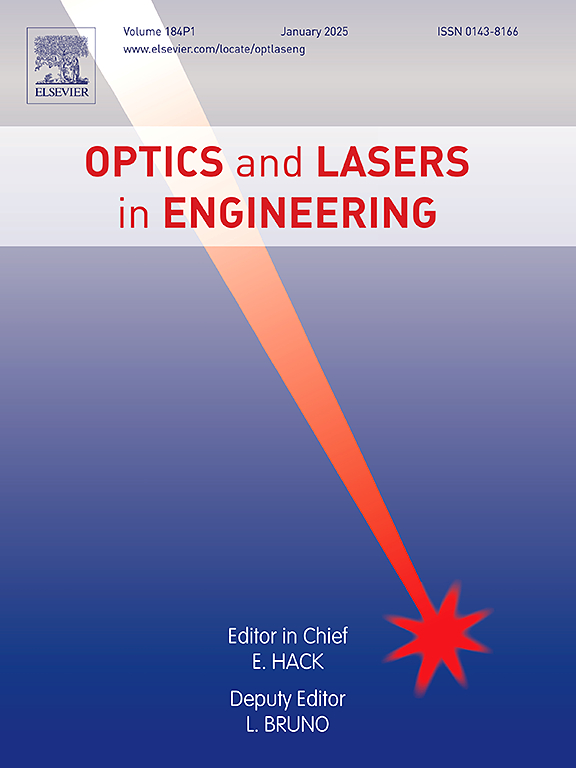Optimization of multi-longitudinal-mode incoherent doppler wind lidar with quadri-channel mach–zehnder interferometer
IF 3.5
2区 工程技术
Q2 OPTICS
引用次数: 0
Abstract
Multi-longitudinal-mode (MLM) high-spectral-resolution lidar is a new concept of incoherent Doppler wind lidar (IDWL), which can avoid the complex techniques of seed injection as well as the high requirement of frequency stabilization and frequency locking. To achieve high-precision atmospheric wind measurement, an optimized design is performed for the MLM IDWL, which utilizes a free-running MLM laser as the excitation light source and a quadri-channel Mach-Zehnder interferometer (QMZI) as the spectral discriminator. Based on the partial coherence theory of quasi-monochromatic light interference, the data inversion algorithms for MLM IDWL are simplified, and the performance evaluation parameters for MLM IDWL are analyzed. Furthermore, using the control variable method, the key parameters of MLM IDWL are optimized by discussing its performance evaluation parameters in the condition of aerosol Mie scattering or molecular Rayleigh scattering, respectively. The simulation experiments of wind measurement with the optimal key parameters prove that the MLM IDWL can realize the atmospheric wind measurement with an accuracy of 0.3 m/s in the low-altitude environments using aerosol Mie scattering echo signals and with an accuracy of 3.0 m/s in the high-altitude environments using molecular Rayleigh scattering echo signals.
四通道马赫曾德尔干涉仪多纵模非相干多普勒风激光雷达优化
多纵向模式(MLM)高光谱分辨率激光雷达是非相干多普勒风激光雷达(IDWL)的一个新概念,它避免了复杂的注种技术以及对频率稳定和频率锁定的高要求。为了实现大气风的高精度测量,采用自由运行MLM激光器作为激发光源,四通道马赫-曾德尔干涉仪作为光谱鉴频器,对MLM IDWL进行了优化设计。基于准单色光干涉的部分相干理论,简化了MLM IDWL的数据反演算法,分析了MLM IDWL的性能评价参数。此外,采用控制变量法,分别讨论了气溶胶Mie散射和分子瑞利散射条件下MLM IDWL的性能评价参数,对其关键参数进行了优化。采用最优关键参数进行的风测量仿真实验证明,MLM IDWL在低空环境下利用气溶胶米氏散射回波信号可实现0.3 m/s的大气风测量精度,在高空环境下利用分子瑞利散射回波信号可实现3.0 m/s的大气风测量精度。
本文章由计算机程序翻译,如有差异,请以英文原文为准。
求助全文
约1分钟内获得全文
求助全文
来源期刊

Optics and Lasers in Engineering
工程技术-光学
CiteScore
8.90
自引率
8.70%
发文量
384
审稿时长
42 days
期刊介绍:
Optics and Lasers in Engineering aims at providing an international forum for the interchange of information on the development of optical techniques and laser technology in engineering. Emphasis is placed on contributions targeted at the practical use of methods and devices, the development and enhancement of solutions and new theoretical concepts for experimental methods.
Optics and Lasers in Engineering reflects the main areas in which optical methods are being used and developed for an engineering environment. Manuscripts should offer clear evidence of novelty and significance. Papers focusing on parameter optimization or computational issues are not suitable. Similarly, papers focussed on an application rather than the optical method fall outside the journal''s scope. The scope of the journal is defined to include the following:
-Optical Metrology-
Optical Methods for 3D visualization and virtual engineering-
Optical Techniques for Microsystems-
Imaging, Microscopy and Adaptive Optics-
Computational Imaging-
Laser methods in manufacturing-
Integrated optical and photonic sensors-
Optics and Photonics in Life Science-
Hyperspectral and spectroscopic methods-
Infrared and Terahertz techniques
 求助内容:
求助内容: 应助结果提醒方式:
应助结果提醒方式:


